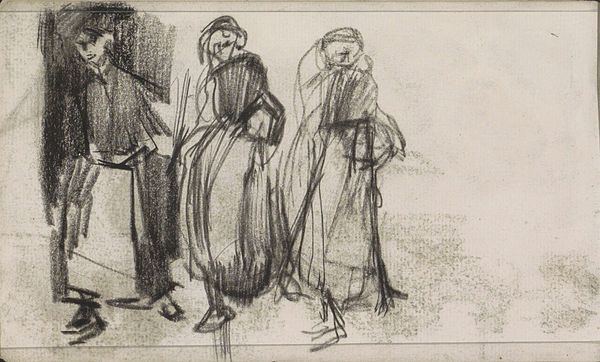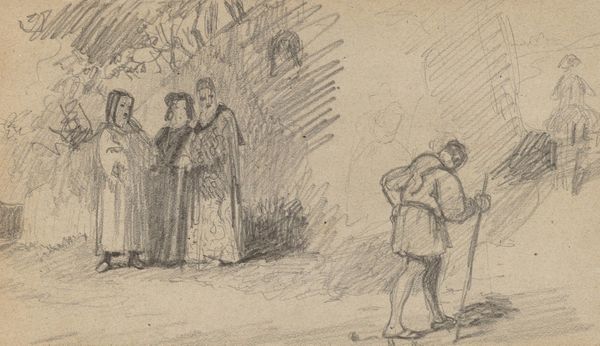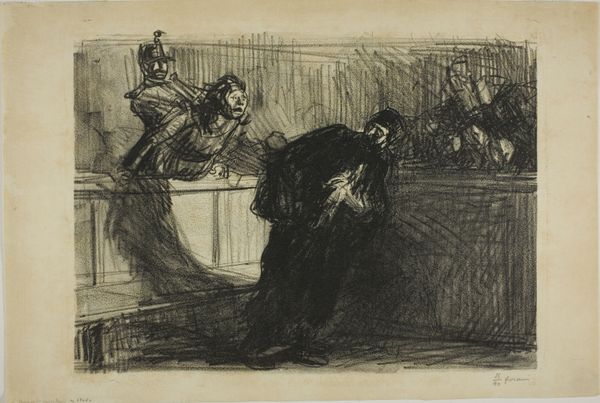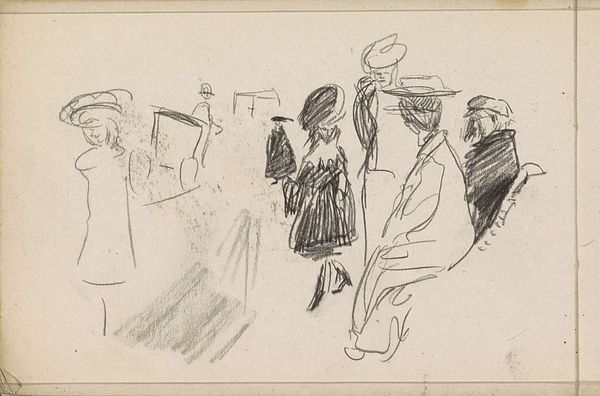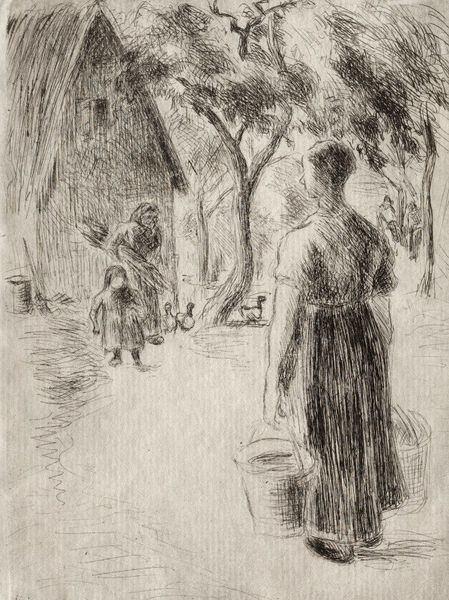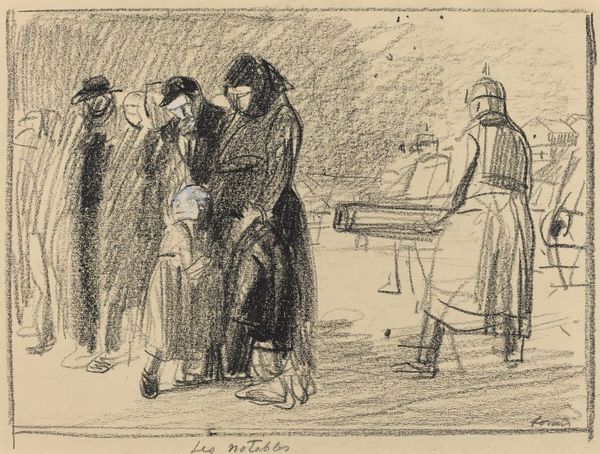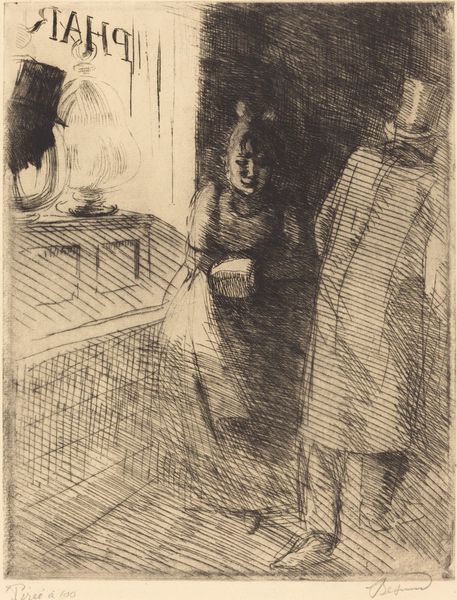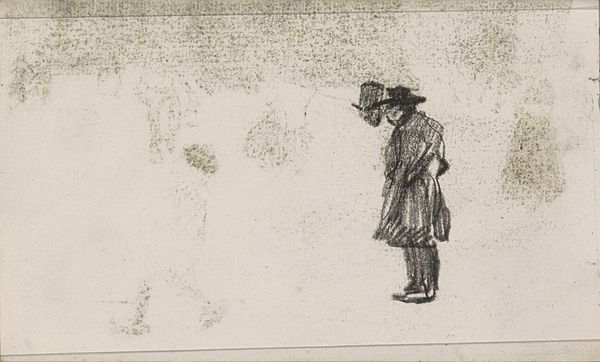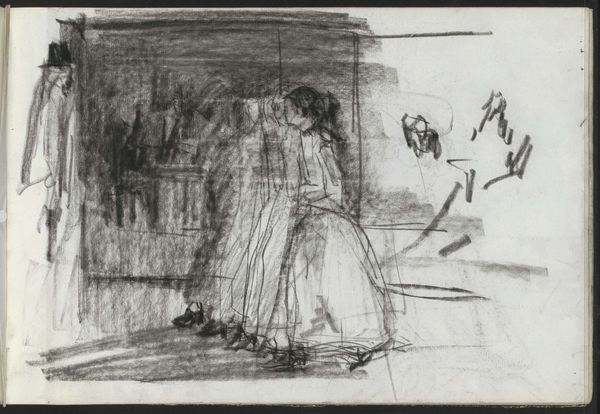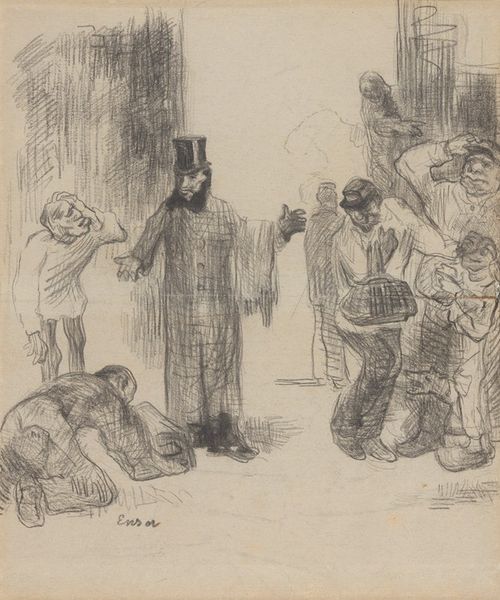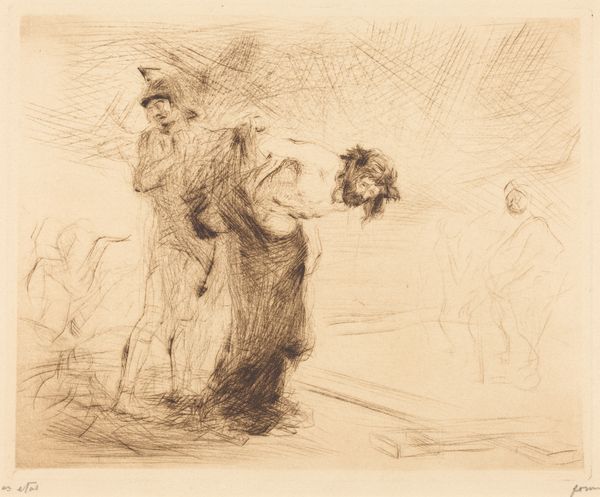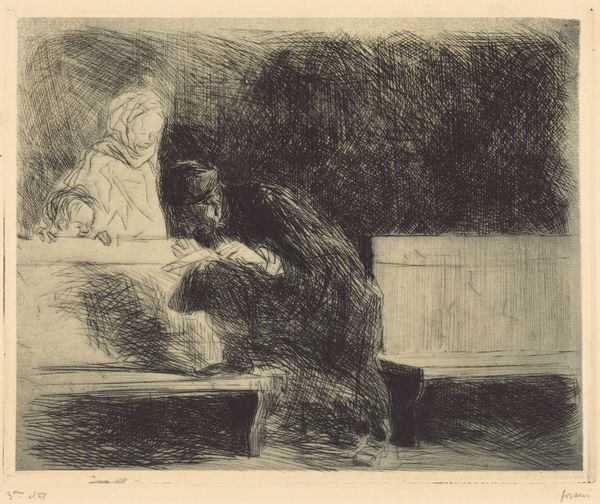
drawing, paper, charcoal
#
drawing
#
impressionism
#
figuration
#
paper
#
line
#
cityscape
#
genre-painting
#
charcoal
#
street
Copyright: Public domain
Curator: This is Vincent van Gogh's drawing, "People Walking on a Street in the Evening," created in 1886, while he was in Paris. It is rendered in charcoal and conté crayon on paper. Editor: It feels incredibly somber, doesn't it? The harsh lines, the indistinct figures… there's a sense of alienation here, a starkness. Curator: Indeed. Note how Van Gogh utilizes the repetitive vertical strokes to create a perspectival recession into space. The figures are arranged in a non-symmetrical grouping along this plane. This adds a rhythmic quality to the composition, a kind of visual pacing, and one sees the profound impact of Impressionism’s flattened picture plane on the work as a whole. Editor: And what I find striking is how the work implicates us, the viewer. This feels less like objective observation, and more like lived experience. Think of the physical act of applying the charcoal to the textured surface. He’s representing the material reality of a Parisian street through rough, repetitive mark-making. It's a visceral experience for both the artist and, by extension, the viewer. This wasn't merely about recording visual information. It was hard work rendered in a single layer. Curator: The lines are purposefully rough. I interpret this, formalistically, as reflecting the burgeoning avant-garde's shift away from academic precision and towards emotional expressionism. The work as a study in urban anomie has also been previously noted by historians and scholars alike. The scale of the individuals and environment contributes to that specific atmosphere of isolation. Editor: I'd agree that he captures a specific energy there—I suspect that one outcome of its creation was, at least partly, for it to serve as documentation. He wanted the people of his moment to be able to examine what city life feels like from his singular, embodied perspective. It goes beyond capturing mere visual information. It documents his experience and materials during the drawing process. I appreciate the focus of raw honesty, absent of formal polish. Curator: A potent synthesis of form and feeling. Editor: The intersection of labor, experience, and documentation… compelling indeed.
Comments
No comments
Be the first to comment and join the conversation on the ultimate creative platform.
